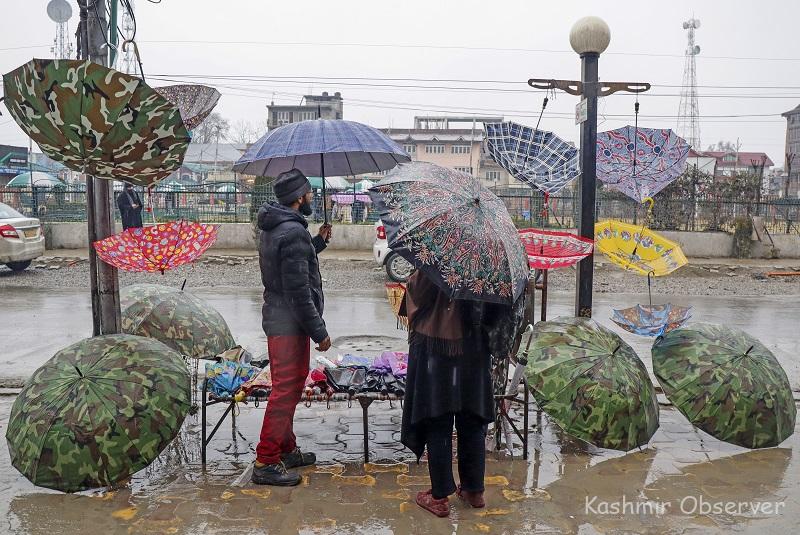
This winter, as the valley grappled with a prolonged dry spell affecting various crucial sectors, the focus intensified on the profound art of forecasting—unraveling the mysteries of what the heavens held in store. Contrary to the usual pattern, Kashmir experienced warmer days than the outside states, and the quest for weather predictions took center stage. As the recent snowfall in the higher reaches has sparked intrigue and hope, Dr Mukhtar Ahmad, Director Meteorological Centre Srinagar, said, “Snowfall following dry spells is not unprecedented; significant snowfalls occurred in 2019-2021, contrasting with dry periods in 2015-2018. Weather patterns evolve, and this variability is anticipated to persist.”
Nevertheless, a critical query persists – Can the snowfall induced by the Western Disturbances prove sufficient to counteract the lingering impact of the extended dry weather?”Kashmir valley is expected to witness severe water and power crises during summers, even if there is significant snowfall, following the end of 40 days of the harshest period of winter, Chillai Kalan,” he predicted.
In a conversation with Kashmir Observer city reporter Majid Nabi, Dr Mukhtar sheds light on the nuances of dry spells, their far-reaching impact, and the intricate artistry of forecasting.
Excerpts:
What was the reason for the weak Western Disturbances in Kashmir that resulted in less winter precipitation?
Weak Western Disturbances (WDs) are attributed to El Nino rather than climate change, as all previous weak WDs in Kashmir exhibited average temperatures. The WD needs a transport mechanism to continue, and the current disturbance forming lacks moisture, hindering its continuity.
When the Pacific Ocean’s water temperature rises above average, a meteorological phenomenon called El Niño is produced which affects the jet stream, resulting in a warmer and dry winter. El Nino, which typically brings higher temperatures, resulting in cloudiness and low minimum temperatures, are mostly to blame for the above-normal maximum and minimum temperatures during winters.
Over the past 50 years, multiple strong El Nino events, including the current one, have disrupted the global atmospheric circulation pattern. Positive Northern Atlantic Ocean Oscillation is conducive to snowfall, while negative oscillations, like the ongoing one, lead to dry spells.
How is glacier formation impacted by less snowfall?
Rapid glacier melting in Kashmir, driven by heat waves and rising temperatures due to climate change is exacerbated by insufficient precipitation. Crucially, higher reaches require snowfall for glacier formation. Without sufficient snowfall, glaciers may experience melting and recession, impacting their size and health.
In upper elevation regions compared to the plains, the rate of temperature increase is often greater. Research suggests that climate change contributes to Kashmir’s diminishing snowfall. A one-degree Celsius temperature rise correlates with a 7% increase in the air’s moisture storage capacity, as per several studies.
What are its consequences on the water levels and other water- dependent sectors in the region?
Reduced glacier formation contributes to a decline in water supply, as glaciers are a crucial source of freshwater. This has implications for various sectors, including agriculture, industry, and domestic use.
Visibly dehydrated vegetation and low water levels in lakes and reservoirs, resulting in water scarcity, reduced quality of potable water, and effects on air quality due to extremely low humidity, are some immediate effects of a dry spell in summers. In the long run, the impacts may include ecological destruction and gradual caving in of land.
The production of hydropower may be negatively impacted, and there may be less water available for cooling thermal and nuclear power plants. The volume of the water flow and the change in elevation—or fall, and often referred to as head—from one point to another determine the amount of available energy in moving water. In general, the greater the water flow and the higher the head, the more electricity a hydropower plant can produce.
Have you noticed any significant changes in weather patterns or deviations from historical data in recent years?
Originally lasting from October to March, J&K’s winter season is now limited to December and January. This can be linked to the global warming and climate change that is occurring right now. Additionally, the nature of precipitation is changing, it used to be snow, but it now falls as rain.
Mountains that envelop Jammu and Kashmir have a significant impact on the region’s climate. These mountains and the water bodies significantly regulate the temperature of Jammu and Kashmir which has a distinct environment due to variations in height. So, alterations in snowfall on the mountains has had an impact on the temperature regulation.
Forecasting in Kashmir has garnered considerable attention, with people eager to anticipate what comes next. How crucial is it to precisely predict weather changes?
The accuracy in the weather forecasting is as important as anything. As people eagerly await updates on what the future holds, the importance of precise weather forecasts cannot be overstated. We never make assumptions based on hearsay; instead, our prognosis is always based on fresh research.
In Kashmir, the importance is heightened due to the region’s diverse climate and the impact of weather on various sectors.
The emergence of independent forecasters in Kashmir sometimes leads to variations in predictions. How do you navigate through differing forecasts?
We believe in scientific research and employ state-of-the-art equipment to foresee the weather. Our prediction is based on study that we periodically do to have an accurate forecast. We have been successful in our forecasts thus far, thanks to Allah. A confident forecast signaling a shift in weather patterns by the end of January proved to be accurate.
As far as the forecasts made by the independent forecasters are concerned, they have no bearing on us. Despite variations from independent sources, the department remains steadfast in its commitment to delivering the most accurate and reliable weather information to the public.
Follow this link to join our WhatsApp group: Join Now
Be Part of Quality Journalism |
Quality journalism takes a lot of time, money and hard work to produce and despite all the hardships we still do it. Our reporters and editors are working overtime in Kashmir and beyond to cover what you care about, break big stories, and expose injustices that can change lives. Today more people are reading Kashmir Observer than ever, but only a handful are paying while advertising revenues are falling fast. |
| ACT NOW |
| MONTHLY | Rs 100 | |
| YEARLY | Rs 1000 | |
| LIFETIME | Rs 10000 | |










